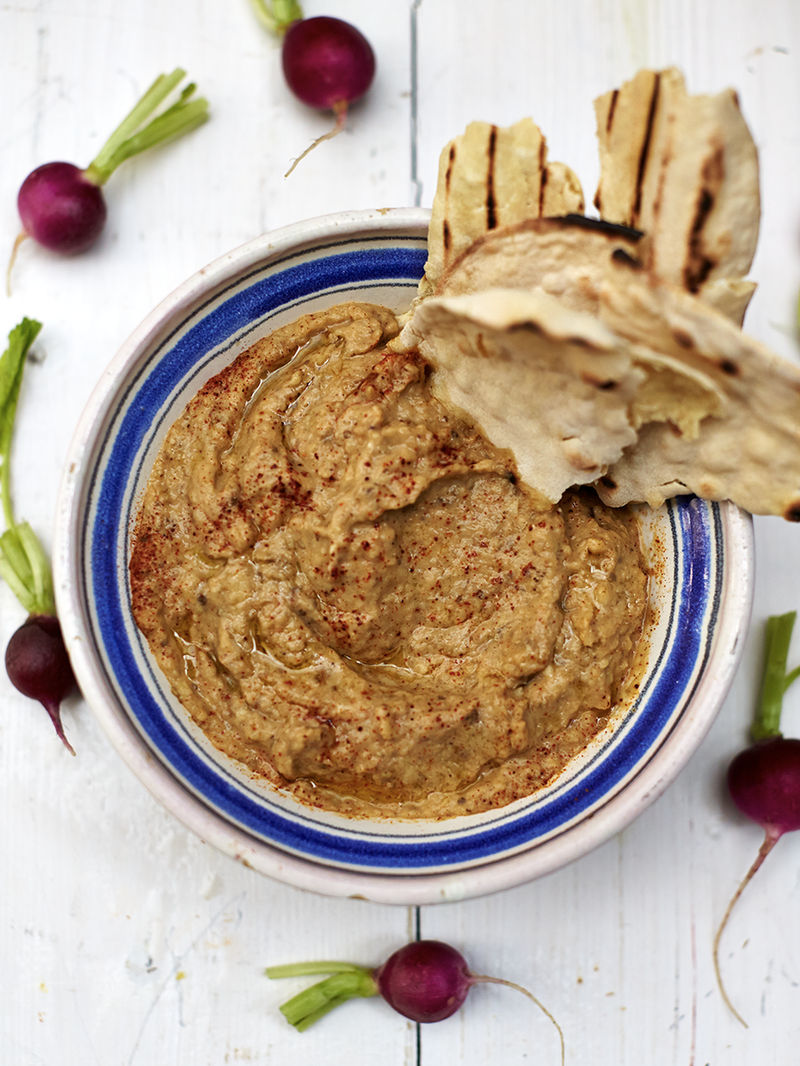This smoky baba ganoush taste dip is fantastic for sharing and served with ice-cold veggies or homemade flatbreads for dunking it’s an absolute joy to eat. On a chopping board, cut the aubergines in half lengthways. Score the flesh sides in a crisscross pattern, making sure you don’t cut through the skins.
Drizzle with 2 tablespoons olive oil, then toss to coat. Arrange on a baking tray, flesh-side facing up, then bake in the oven for around 45 minutes, or until soft. Using oven gloves, remove the aubergine from the oven, then leave aside to cool. Peel and roughly chop the garlic, then place in a food processor. 2 tablespoons extra virgin olive oil and the aubergine, discarding the skin.
Squeeze in the juice, using your fingers to catch any pips. Secure the lid and blitz to a nice thick dip. Have a taste and add a tiny pinch of salt and pepper, if you think you think it needs it. Transfer to a bowl, to serve.

What foods are good for our gut health? Mutabbal is sometimes said to be a spicier version of baba ghanoush. Mutabbal consists of mashed roasted eggplants, tahini, salt, pepper, garlic, lemon and often yogurt. The bābā is an Arabic word that means ‘father’ and is also a term of endearment, while ġannūj could be a personal name. In Turkey, the dish is known as babaganuş or abugannuş. In Armenia, the dish is known as mutabal.
Food writer and historian Gil Marks writes in his book that: “Israelis learned to make baba ghanouj from the Arabs”. Food from the Arab World, Khayats, Beirut, Lebanon. The Arabian Nights Cookbook: From Lamb Kebabs to Baba Ghanouj, Delicious Homestyle Arabian Cooking. Look up baba ganoush in Wiktionary, the free dictionary. Foodways and Daily Life in Medieval Anatolia: A New Social History. Keep this tahini dressing recipe on hand at all times!
It’s creamy, rich, nutty, and bright – perfect for tossing with salads and drizzling over roasted veggies, grain bowls, falafel, and more. Of all of the homemade salad dressings out there, this lemon tahini dressing might be the one I make most often. It consists of a short list of ingredients that I always keep on hand, and it’s super easy to stir together. No blender or food processor required!
Nowadays, most home cooks I know are familiar with tahini, but in case you haven’t heard of it, it’s a paste made from ground sesame seeds that originated in the Middle East. It makes up the dressing’s creamy base. For the best results, use really smooth, runny tahini here, not the dry, stiff stuff that you might find at the bottom of a jar. It makes the dressing nice and bright. It highlights the tahini’s rich, nutty flavor. It tames the bright lemon juice and sharp garlic. To make all the flavors pop!
